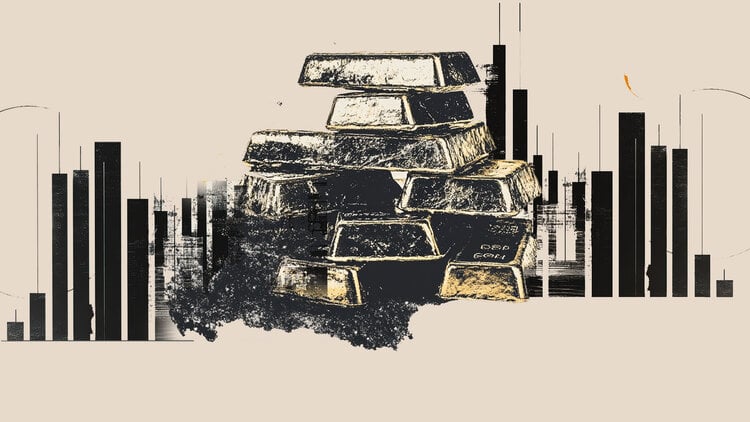Here’s what you need to know on Monday, October 21:
After rising almost 2.5% the previous week, Gold (XAU/USD) It stretched higher during Asian trading hours on Monday and hit a new record above $2,730 before retreating slightly. The economic calendar will not offer any high-impact macroeconomic data releases on Monday. In the US session, several Federal Reserve (Fed) monetary policymakers will give speeches.
US Dollar PRICE Last 7 days
The table below shows the percentage change of the United States Dollar (USD) against the main currencies in the last 7 days. US dollar was the strongest currency against the Swiss franc.
| USD | EUR | GBP | JPY | CAD | AUD | NZD | CHF | |
|---|---|---|---|---|---|---|---|---|
| USD | 0.79% | 0.29% | 0.34% | 0.36% | 0.96% | 0.85% | 1.01% | |
| EUR | -0.79% | -0.56% | -0.54% | -0.34% | 0.20% | -0.03% | 0.13% | |
| GBP | -0.29% | 0.56% | 0.02% | 0.09% | 0.79% | 0.55% | 0.67% | |
| JPY | -0.34% | 0.54% | -0.02% | 0.00% | 0.63% | 0.55% | 0.65% | |
| CAD | -0.36% | 0.34% | -0.09% | -0.01% | 0.54% | 0.51% | 0.48% | |
| AUD | -0.96% | -0.20% | -0.79% | -0.63% | -0.54% | -0.10% | 0.02% | |
| NZD | -0.85% | 0.03% | -0.55% | -0.55% | -0.51% | 0.10% | 0.10% | |
| CHF | -1.01% | -0.13% | -0.67% | -0.65% | -0.48% | -0.02% | -0.10% |
The heat map shows percentage changes for major currencies. The base currency is selected from the left column, while the quote currency is selected from the top row. For example, if you choose the US Dollar from the left column and move along the horizontal line to the Japanese Yen, the percentage change shown in the box will represent USD (base)/JPY (quote).
Growing prospects of a low interest rate global environment and rising geopolitical tensions fueled Gold’s rally last week. Additionally, easing concerns about an economic downturn in China helped the XAU/USD gain more strength. The People’s Bank of China (PBoC) announced on Monday that it cut the one-year Lending Prime Rate (LPR) by 25 basis points (bps), from 3.35% to 3.10%. Markets were predicting that the PBoC would reduce that rate by 10 bps to 3.15%. Additionally, the Chinese central bank cut the five-year LPR from 3.85% to 3.60%.
He US Dollar Index (USD) made a correction heading into the weekend and lost 0.3% on Friday, breaking an eight-day winning streak. The index remains in a consolidation phase around 103.50 in the European morning on Monday. Meanwhile, US stock index futures are trading virtually unchanged on the day.
EUR/USD it recovered modestly on Friday but posted its third consecutive weekly loss. The pair struggles to hold its ground early on Monday and is trading marginally lower on the day near 1.0850.
Reserve Bank of Australia (RBA) Deputy Governor Hauser said on Monday that they remain dependent on the data, adding that monetary policy is ready to respond in either direction. AUD/USD remains under modest bearish pressure early Monday and is trading in negative territory below 0.6700.
After losing almost 0.5% on Friday, USD/JPY started the week on the wrong foot and fell towards 149.00. However, with the USD holding firm against its peers, the pair reversed direction and was last seen trading marginally higher on the day above 149.50.
GBP/USD It closed in positive territory on Thursday and Friday, erasing a large portion of its weekly losses. The pair remains stable above 1.3000 in the European morning on Monday.
Gold FAQs
Gold has played a fundamental role in human history, as it has been widely used as a store of value and medium of exchange. Today, apart from its brilliance and use for jewelry, the precious metal is considered a safe-haven asset, meaning it is considered a good investment in turbulent times. Gold is also considered a hedge against inflation and currency depreciation, since it does not depend on any specific issuer or government.
Central banks are the largest holders of Gold. In their aim to support their currencies in turbulent times, central banks tend to diversify their reserves and purchase Gold to improve the perception of strength of the economy and currency. High Gold reserves can be a source of confidence for the solvency of a country. Central banks added 1,136 tons of gold worth about $70 billion to their reserves in 2022, according to data from the World Gold Council. This is the largest annual purchase since records exist. Central banks in emerging economies such as China, India and Türkiye are rapidly increasing their gold reserves.
Gold has an inverse correlation with the US Dollar and US Treasuries, which are the main reserve and safe haven assets. When the Dollar depreciates, the price of Gold tends to rise, allowing investors and central banks to diversify their assets in turbulent times. Gold is also inversely correlated with risk assets. A rally in the stock market tends to weaken the price of Gold, while sell-offs in riskier markets tend to favor the precious metal.
The price of Gold can move due to a wide range of factors. Geopolitical instability or fear of a deep recession can cause the price of Gold to rise rapidly due to its status as a safe haven asset. As a non-yielding asset, the price of Gold tends to rise when interest rates fall, while rising money prices tend to weigh down the yellow metal. Still, most of the moves depend on how the US Dollar (USD) performs, as the asset is traded in dollars (XAU/USD). A strong Dollar tends to keep the price of Gold in check, while a weaker Dollar is likely to push up Gold prices.
Source: Fx Street
I am Joshua Winder, a senior-level journalist and editor at World Stock Market. I specialize in covering news related to the stock market and economic trends. With more than 8 years of experience in this field, I have become an expert in financial reporting.







